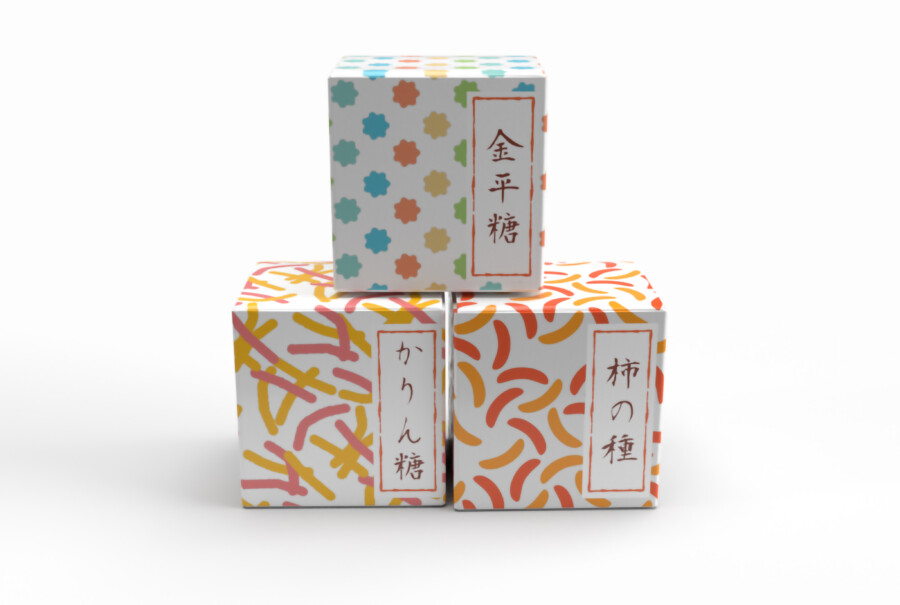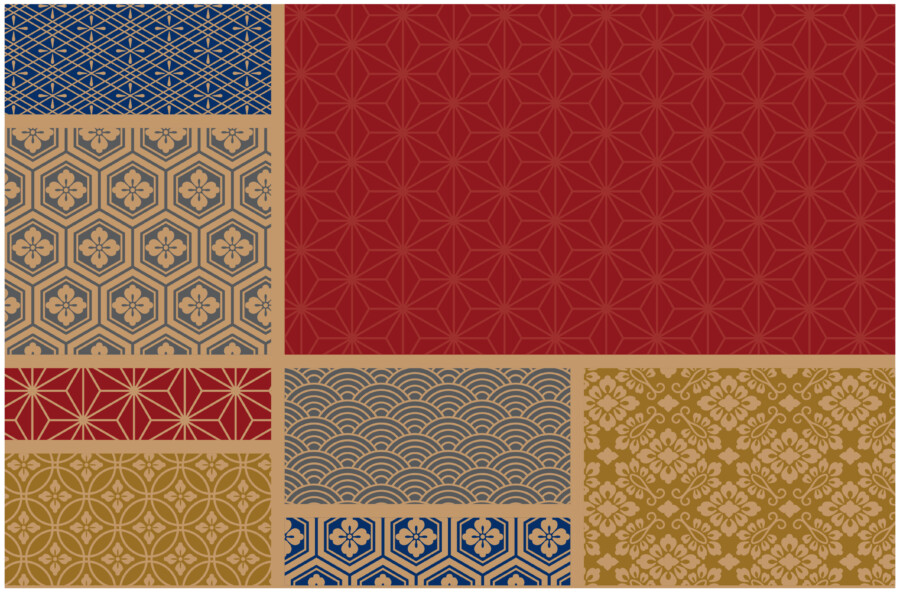
Package Design with Japanese Flair: What Are the Key Points That Captivate Hearts?
The “Japanese taste” that breathes life into Japanese culture and tradition is attracting more attention than ever. Especially in package design, its unique beauty and depth captivate many people’s hearts. This article will explain in detail the points and specific examples for incorporating Japanese taste into package design. Let’s learn the tricks to maximize the appeal of Japanese style and enhance product value.
What is Japanese Taste? Its Characteristics and Appeal
Basic Elements of Japanese Taste
Japanese taste is characterized by simple yet rich expression. The basic elements include “nature,” “harmony,” and “tranquility.” These elements are deeply rooted in Japan’s climate, the changing of the four seasons, and its history and culture. For example, motifs from nature and the use of subtle colors give viewers a sense of peace. By incorporating these elements into design, you can complete a package with Japanese essence.
Collaboration with Traditional Crafts
One way to accentuate Japanese taste is through collaboration with traditional crafts. For instance, incorporating traditional Japanese materials and techniques such as lacquerware, ceramics, or washi paper creates packages with unique textures. The delicate techniques of craftsmen give individuality and value to each product, providing consumers with a sense of specialness. Such collaborations also enhance brand reliability and a sense of luxury.
Key Points in Color and Material Selection
Choosing colors and materials is crucial for effectively expressing Japanese taste. Using traditional Japanese colors such as “indigo blue,” “vermilion,” or “matcha green” can instantly create a Japanese atmosphere. Also, selecting natural materials like washi paper, bamboo, or wood can convey the appeal of Japanese style not only visually but also tactilely. These materials are also highly valued for being environmentally friendly.
Specific Examples of Japanese Package Design
Traditional Japanese Confectionery Packaging
Japanese confectionery is a product group that expresses Japanese taste in both appearance and flavor. In traditional Japanese confectionery packaging, it’s common to incorporate seasonal elements such as cherry blossoms, plum blossoms, or autumn leaves. Packaging using wooden boxes or washi paper is highly valued for gift purposes. Attention is paid to intricate patterns and wrapping methods to enhance the delicate beauty of Japanese confectionery.
Sake and Tea Package Design
Package designs for sake and tea are required to reflect the history and culture of the products themselves. For sake, bottle shape, label design, or packaging in wooden boxes create a sense of luxury. Labels often use traditional motifs such as brush calligraphy or family crests. For tea packaging, containers like tea canisters or bamboo tubes are preferred, cherishing the Japanese atmosphere.
Examples of Modern Approaches Using Japanese Style
There’s an increasing trend of fusing modern design with Japanese taste. For example, combining simple, modern graphic design with traditional Japanese colors allows for new expressions of Japanese style. Designs incorporating minimalist aesthetics or packages utilizing digital technology are also attracting attention. Such modern approaches have the power to appeal to younger generations and overseas markets.
Elements of Package Design That Captivate Hearts
Visually Appealing Design
In visually appealing design, it’s important to pursue beauty that makes the package itself a work of art. Fine details, balanced layouts, and appropriate color variations catch consumers’ eyes. When incorporating Japanese taste, it’s effective to include motifs of natural landscapes, traditional family crests, flowers, or animals. This makes the product visually attractive and memorable.
Material Selection Considering Texture and Usability
In package design, not only visual appeal but also texture is an important element. The feel when touched and usability greatly affect consumer satisfaction. Choosing materials with pleasant textures like washi paper, fabric, or bamboo can enhance the sense of quality and luxury of the product. Also, designs that consider usability, such as ease of holding and opening, are required. With such considerations, consumers can feel the goodness of the product from the moment they pick it up.
Enhancing Value Through Storytelling
Packaging design becomes even more attractive by conveying the story behind the product. For example, by including information about where it was made or what historical and cultural background it has, consumers can feel the depth of the product. Especially for packages incorporating Japanese taste, it’s effective to include specific episodes about local traditions or craftsmen’s techniques. Such storytelling has the power to increase attachment to the product and purchase intention.
Tips for Incorporating Japanese Taste
Research Local Crafts and Traditional Culture
To incorporate Japanese taste, it’s important to first research local crafts and traditional cultures. Each region has its own unique crafts and culture, and by utilizing their characteristics, original designs become possible. For example, reflecting regional specialties like Kyoto’s Yuzen dyeing, Kanazawa’s gold leaf, or Okinawa’s bingata in the design can complete a package with more depth.
Maintain Consistency in Design
Consistent design strengthens brand identity. Even when incorporating Japanese taste, maintaining consistent themes, color usage, and fonts creates a sense of unity across the entire brand. For example, unifying colors and materials used throughout the package and maintaining design consistency can create a strong impression on consumers. As a result, brand recognition and reliability increase.
Balance Simplicity and Delicacy
Designs incorporating Japanese taste require a balance of simplicity and delicacy. Avoiding excessive decoration and expressing beauty with minimal elements is the basis of Japanese aesthetics. However, by incorporating fine details and ingenuity within this, designs with depth and richness can be completed. For example, adding a single point of intricate decoration by a craftsman to a simple package can create a sense of specialness.
Future Prospects for Japanese Package Design
Sustainability and Eco-Friendly Design
As a future prospect for package design incorporating Japanese taste, sustainability and eco-friendly design are becoming important themes. By using natural materials and adopting reusable packaging, consideration for the environment can be demonstrated. This not only responds to consumers’ increasing environmental awareness but also emphasizes the brand’s social responsibility. Moreover, sustainable design is an element that enhances brand reliability in the long term.
The Appeal of Japanese Style in Overseas Markets
Japanese taste is highly valued in overseas markets as well. Many people are interested in Japanese traditional culture and aesthetics, and Japanese package design is an effective means of conveying this appeal. In particular, traditional crafts designated as UNESCO Intangible Cultural Heritage and minimalism based on Zen aesthetics are popular overseas. Packages incorporating Japanese taste will contribute to increasing brand awareness and expanding sales in overseas markets.
Fusion of Digital Technology and Tradition
The fusion of digital technology and tradition is also an important element in the future of Japanese package design. By utilizing the latest printing technologies and digital art, new perspectives can be added to traditional designs, creating more attractive packages. For example, packages using augmented reality (AR) technology provide consumers with new experiences and further enhance product appeal. Digital technology-based promotion and marketing strategies are also effective means of spreading Japanese taste effectively.
Conclusion
Package design incorporating Japanese taste captures many people’s hearts with its beauty and depth. By combining various elements such as harmony with nature and traditional culture, color and material selection, and storytelling, product value can be enhanced. In the coming era, sustainable designs utilizing Japanese taste and fusion with digital technology will continue to evolve further.
Get Japan-Optimized Packaging →











